Software engineering is becoming more and more complex by the day. At the same time, software development teams are under pressure to streamline the development phase and stay under budget. This makes for a challenging and stressful environment for managers and developers.
In this post, we’ll explore some common software engineering challenges that software teams face daily and how you can overcome them.
1. Shifting Project Requirements
One of the biggest challenges faced by engineering teams is staying on top of changing project requirements, which are often unclear and subject to shift at any time. This tends to happen when teams introduce new features or work with multiple stakeholders and consultants.
Of course, this can be very stressful for engineers, who are often left to navigate changing requirements and directions.
Luckily, managers can help by acting as a buffer, handling requests and updates and distributing assignments when they come through. This strategy frees developers to focus on completing tasks and meeting deadlines, even when assignments change unexpectedly.
2. Uneven Workload Distribution
Fairly distributing workloads is one of the hardest jobs that managers face — and it’s especially difficult when you lack visibility into workloads and responsibilities. It can be very challenging to issue assignments and begin sprints without a clear understanding of what team members currently have on their plates.
As such, managers need to have full visibility into what team members are working on. It also helps to share this information with other team members before starting sprints so that individuals are aware of the group’s bandwidth and availability. This helps to manage expectations and reduce frustration.
You can have a clear and comprehensive of your team’s health with LinearB. Our Pulse dashboard shows which developers are contributing to which projects and issues and their amount of WIP. We’ll even proactively alert you if too much has been put on one developer’s plate and they’re not taking days off, putting them at risk of burning out.
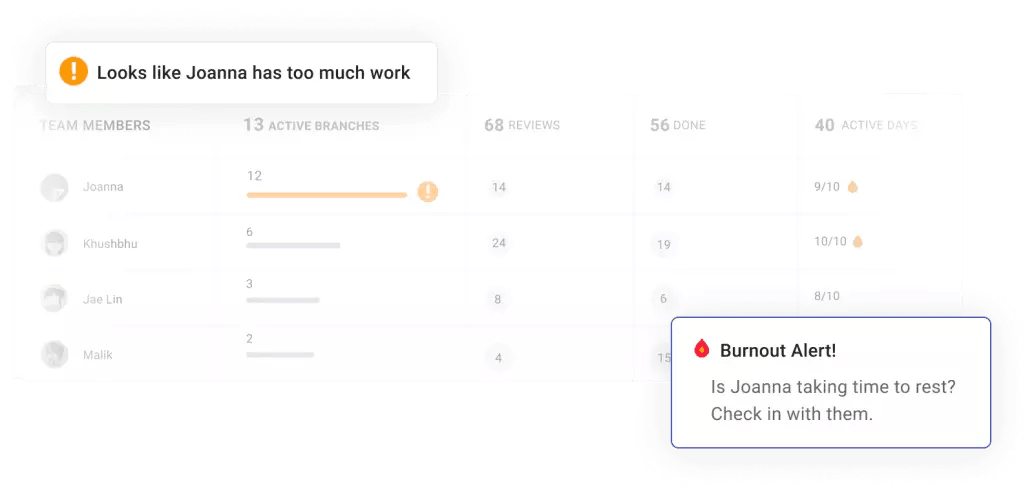
3. Transitioning to DevOps and DevSecOps
Many businesses are transitioning from traditional software models to agile DevOps and DevSecOps frameworks. On one hand, these models can significantly enhance productivity and collaboration. But they also require careful planning and integration, as well as a cultural shift.
Rushing into a DevOps or DevSecOps model can be confusing and lead to unnecessary delivery delays.
It can also potentially alienate workers who prefer traditional development models and lead to pushback.
In order to prevent slowdowns, engineering leads should meet with team members and prepare them for workflow changes. It’s also a good idea to integrate slowly and make adjustments as you go along. By easing teams into DevOps or DevSecOps, you can improve workflows and reduce friction.

You can also leverage tools like LinearB’s WorkerB automation bot to facilitate the transition to new development processes. For example, if you want to speed up your cycle times, then you can help your engineers review code more quickly, which our research shows is the biggest bottleneck in development pipelines.
If someone neglects a PR, WorkerB will automatically remind them in Slack or Microsoft Teams. If they create a PR that is too big, WorkerB will point it out so that they can create a smaller one or at least be reminded of where they can improve.
WorkerB also enables your developers to review small PRs from right within Slack. By saving them time and the context switch into Jira, they will be more productive, the review will happen faster, and the developer experience will be improved.
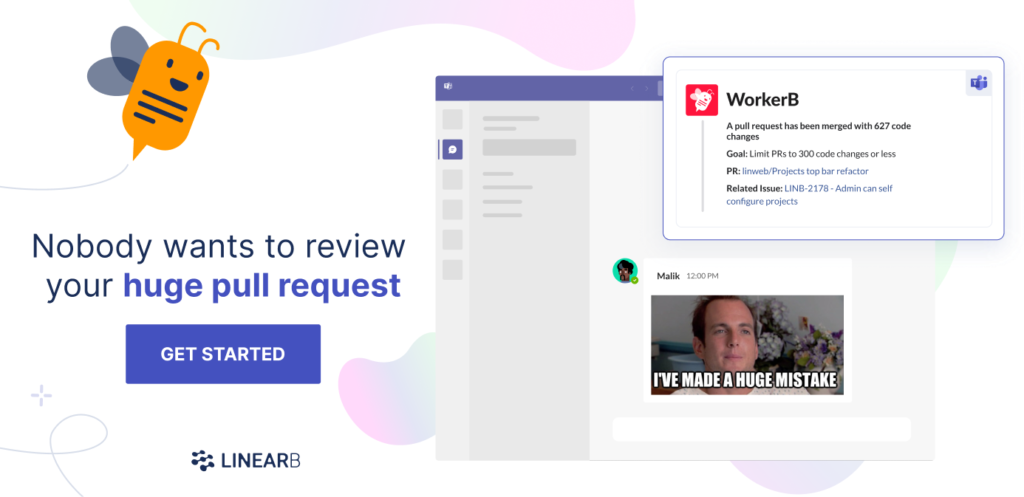 Improve your code quality and developer workflow with smaller pull requests. Get started with your free-forever LinearB account today.
Improve your code quality and developer workflow with smaller pull requests. Get started with your free-forever LinearB account today.
4. Maintaining Quality
Like in “real life,” in engineering orgs time is the scarcest resource. Engineers are always pressed for time, so they’re forced to make trade-offs. Many choose to focus on shipping new features instead of performing quality assurance (like reviews) on code written by other people. This is well-intentioned but is ultimately counterproductive.
Sacrificing quality in order to achieve short-term increases in agile velocity is an anti-pattern that leads to technical debt and a reduction in development velocity and application reliability and performance in the longer term.
 Find out why agile velocity is the most dangerous metric for software developers. Look at 12 alternative metrics instead.
Find out why agile velocity is the most dangerous metric for software developers. Look at 12 alternative metrics instead.
There are several metrics you should always keep an eye on in order to maintain high code quality. There’s Change Failure Rate and Mean Time to Restore from the DORA metrics. There’s also review depth and code churn.
You can decompose code churn into two metrics: refactor and rework. Both look at code that was rewritten, the difference is that rework only considers code that was recently shipped. While a high refactor rate can be a good sign, a high rework rate is a strong signal that your team is shipping low quality code that is causing bugs in production and has to be fixed.
In LinearB, you can track your rework rate over time and compare this to the engineering benchmarks we established by studying almost 2,000 development teams.
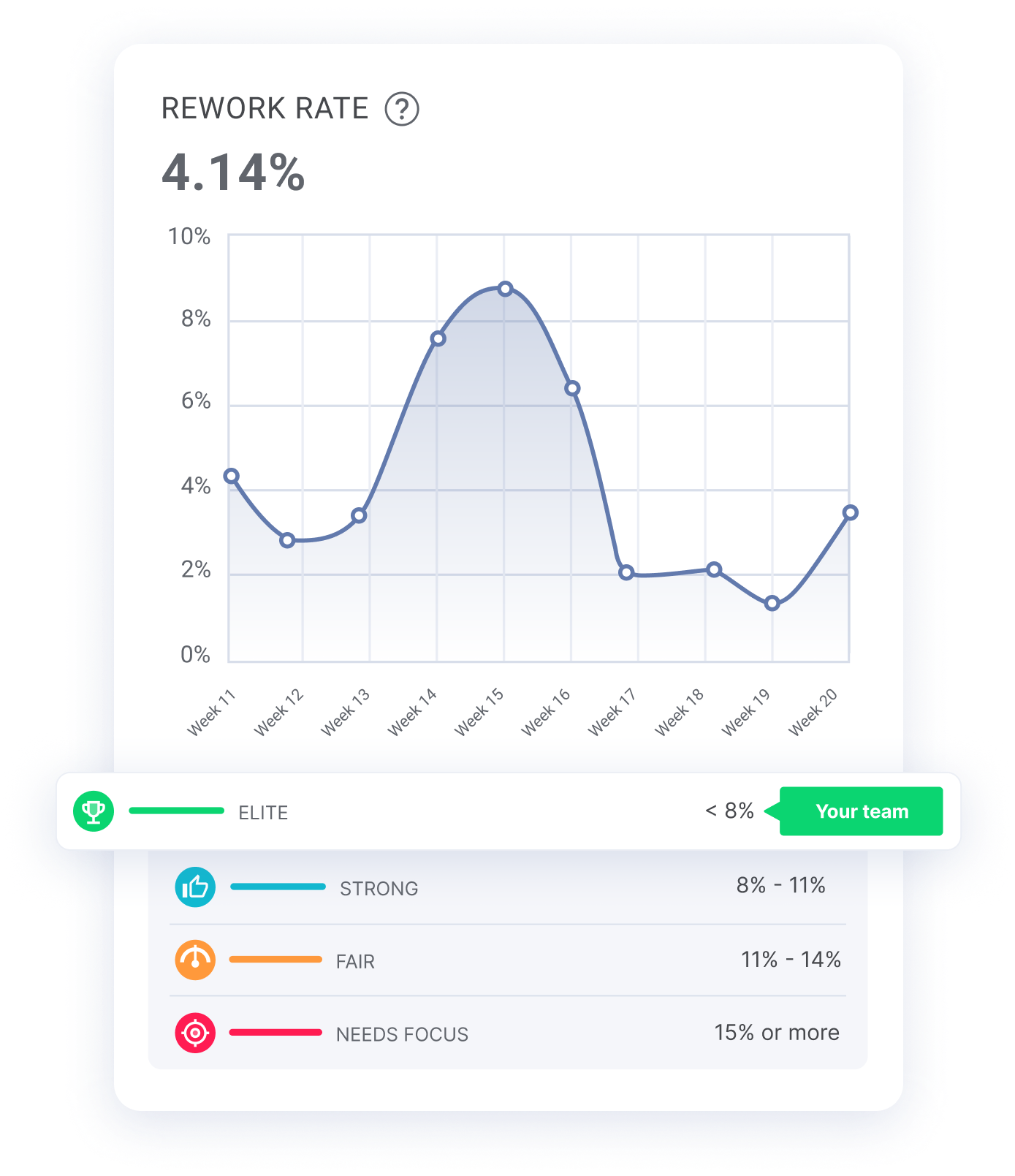
5. Integrating With Other Applications and Systems
Businesses today use a wide variety of applications and systems. It can be challenging to integrate third-party databases, systems, and other services into development projects. And once you integrate, the job isn’t over. APIs are always changing and integrations have to change with them.
An increasingly popular solution is to leverage a middleware company to manage your integrations. Another solution is to use vendor-agnostic software that can run on any number of platforms or providers.
6. Planning Accurately
When is feature XYZ going to be finished?
Engineering leaders are asked this all the time, and usually it’s a hard question to answer. The nature of complex systems like software is that they are unpredictable. Bugs can arise. Technical debt can prevent any forward progress until it is paid off.
But you can plan more accurately if you leverage the right tools. LinearB’s Planning Accuracy metric shows you precisely how well you are planning your sprints.

This enables you to see where you stand now, where you can improve, and whether your efforts to improve are working.
We also give you the insights you need to understand why you’re not planning more accurately. Our Investment Profile metrics capture how much unplanned work your team had to take on during a sprint. You can even zoom in on which issues made up that unplanned work so that you can get to the bottom of why you didn’t deliver what you promised to deliver.
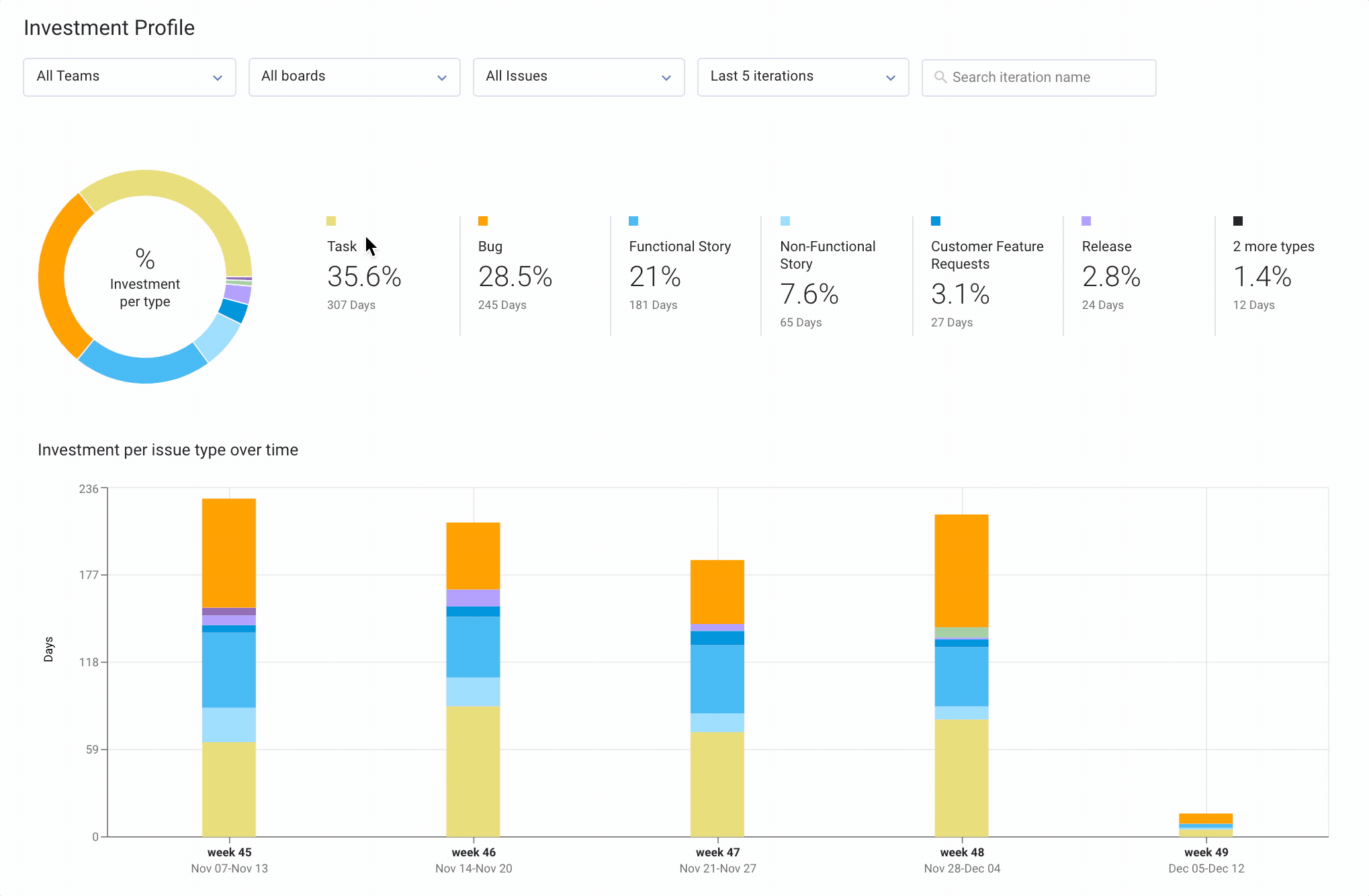
With insights as deep and granular as these, you can go from problem to solution in no time and start planning more accurately, delivering on your promises, and enabling the rest of your company to align around engineering.
7. Data Privacy
Businesses today face an ever-growing number of privacy regulations. For example, teams need to comply with the EU’s General Data Protection Regulation (GDPR), the California Consumer Privacy Act (CCPA), and the Health Insurance Portability and Accountability Act (HIPAA), to name a few examples. Regulations change from time to time and restrict how companies can use data when developing products and services.
Engineering teams need to have a framework in place to understand changing policies and develop data privacy best practices. This is necessary for staying in compliance and avoiding negative outcomes like bad press and fines.
8. Rising Competition
Innovative technology is no longer built just in Silicon Valley. There are companies everywhere shipping great software products and creating exceptional user experiences. This means that the pressure on dev teams to develop software quickly has never been greater.
If you could only monitor one engineering metric, it’s hard to think of a better choice than cycle time. If your cycle time is consistently fast, this means that you are constantly delivering more value to users.
Cycle time is also great for driving improvement in your development processes because it is sensitive to your performance, or lack thereof, in so many areas.
With LinearB’s cycle time metric, you get an accurate, up-to-date picture of how fast your team is moving. You can also see the length of each of the 4 sub-phases of cycle time — and with just one click, you can see the individual issues driving the length of each sub-phase. When it’s so easy to go that granular, you can drive immediate, tangible improvement.
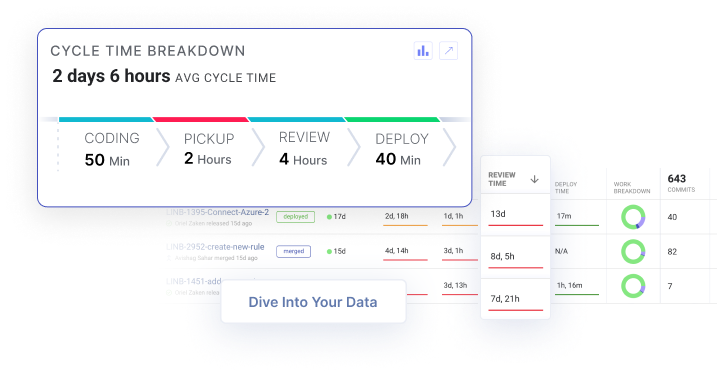 Get context around cycle time bottlenecks in one click. Diving into your data has never been this easy. Get started with our free-forever account today!
Get context around cycle time bottlenecks in one click. Diving into your data has never been this easy. Get started with our free-forever account today!
9. Talent Shortages
Finding the right developers, especially the right senior developers, has long been a challenge for tech companies. It has only gotten harder because the pandemic has shrunk the budgets of many teams. Engineering leaders are being asked to do more with less.
One solution is to leverage external services to handle things like identity management or vulnerability detection and remediation (see #5 above).
Another solution is to make your engineers more productive. LinearB’s WorkerB bot is all about optimizing developer workflows. By automating notifications and enabling developers to create tickets, review PRs, and check on the status of their PRs and reviews from right within Slack, WorkerB is making engineers more productive.
How to Overcome Software Engineering Challenges
Engineering teams face so many challenges – some are old, some are new. In this post, we looked at 9 of the most common and how you can leverage LinearB to overcome them.
With LinearB’s metrics and benchmarks, you can understand not just how your team is performing but also how you do better.





